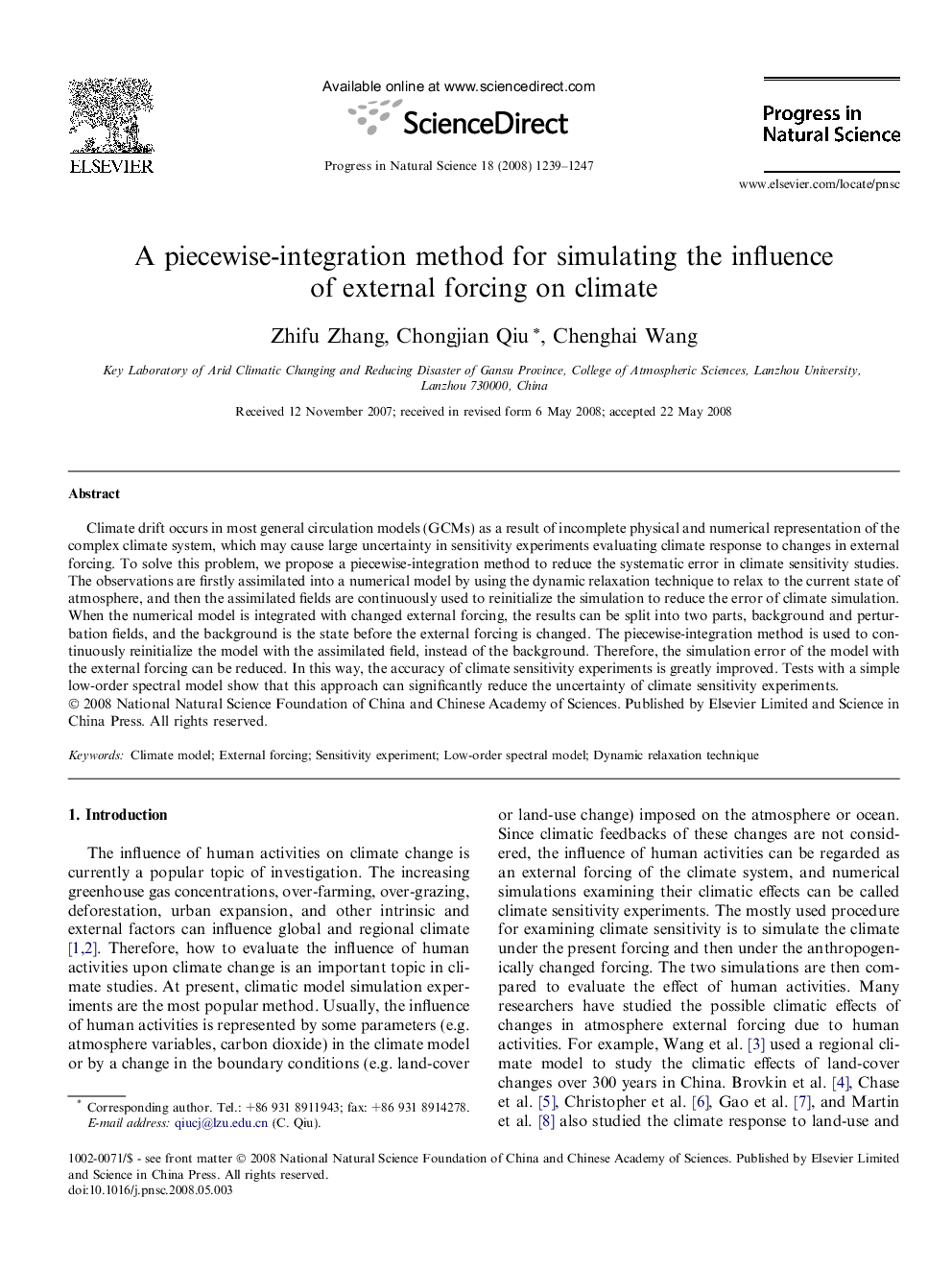| Article ID | Journal | Published Year | Pages | File Type |
|---|---|---|---|---|
| 1549029 | Progress in Natural Science: Materials International | 2008 | 9 Pages |
Climate drift occurs in most general circulation models (GCMs) as a result of incomplete physical and numerical representation of the complex climate system, which may cause large uncertainty in sensitivity experiments evaluating climate response to changes in external forcing. To solve this problem, we propose a piecewise-integration method to reduce the systematic error in climate sensitivity studies. The observations are firstly assimilated into a numerical model by using the dynamic relaxation technique to relax to the current state of atmosphere, and then the assimilated fields are continuously used to reinitialize the simulation to reduce the error of climate simulation. When the numerical model is integrated with changed external forcing, the results can be split into two parts, background and perturbation fields, and the background is the state before the external forcing is changed. The piecewise-integration method is used to continuously reinitialize the model with the assimilated field, instead of the background. Therefore, the simulation error of the model with the external forcing can be reduced. In this way, the accuracy of climate sensitivity experiments is greatly improved. Tests with a simple low-order spectral model show that this approach can significantly reduce the uncertainty of climate sensitivity experiments.
